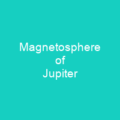Imagine the night sky as a canvas, painted with brilliant hues of green, red, and purple. This is an aurora, a natural light display that dances across Earth’s polar regions, a phenomenon so mesmerizing it has captivated human imagination for centuries.
The Mysteries of Aurora
Have you ever wondered what causes these ethereal lights? An aurora is a result of disturbances in the Earth’s magnetosphere due to solar wind. It’s like a cosmic dance, where charged particles from the sun interact with our planet’s magnetic field and atmosphere, creating a spectacle that can be seen only at high latitudes.
The Origins of Aurora
Did you know that the term ‘aurora’ comes from Roman and Greek mythology? It refers to the goddess of dawn, Aurora, and ancient gods of the north and south winds. This connection between light and dawn hints at the beauty and mystery surrounding these natural phenomena.
Observing Aurora
The auroral zone is where you’re most likely to catch a glimpse of this celestial dance, typically centered around 67° north and south latitudes. However, during geomagnetic storms, auroras can be seen in lower latitudes too. Imagine the sky lighting up like a giant, glowing curtain, casting a greenish or red glow that seems almost magical.
Types of Aurora
Auroras come in various forms: curtains, rays, spirals, and flickers. Each form tells its own story, depending on the acceleration imparted to the particles involved. From mild glows to intense displays, auroras are a testament to nature’s power and beauty.
Understanding Aurora
The basic cause of auroras involves the interaction between solar wind and Earth’s magnetosphere. This process is complex but fascinating. Imagine the solar wind as a stream of charged particles that interact with our planet’s magnetic field, creating an obstacle known as the magnetotail.
Acceleration Mechanisms
Auroral particles are primarily sourced from the solar wind feeding into Earth’s magnetosphere. When these particles enter the atmosphere, they emit light due to ionization and excitation of atmospheric constituents. The colors you see—red, green, blue, and purple—are a result of different altitudes and atmospheric conditions.
Historical Significance
Auroras have been observed for centuries, with historical records dating back to ancient China in 977 or 957 BC. In Japan, researchers claim that red pheasant tails witnessed across the night sky might be a red aurora produced during a magnetic storm in 620 AD. These events not only captivated people but also had practical implications, such as affecting telegraph lines.
Modern Observations
Today, we have advanced tools to study and predict auroras. Aurora forecasts can help you plan your next viewing experience. Whether it’s a live webstream or a forecast map showing the probability of visible aurora, there are many resources available to enhance your understanding and anticipation.
The Future of Aurora Research
As we continue to explore space and understand our planet better, the mysteries of auroras will only deepen. From the northern lights to their counterparts in other planets, these phenomena remind us of the interconnectedness of our universe.
So, next time you look up at a clear night sky, remember that what you’re seeing might just be a piece of cosmic art, painted by nature’s own hand.

You want to know more about Aurora?
This page is based on the article Aurora published in Wikipedia (retrieved on February 16, 2025) and was automatically summarized using artificial intelligence.






